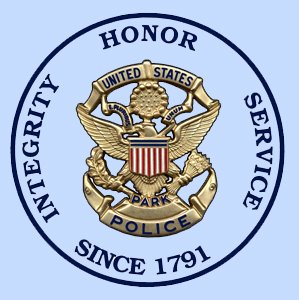The United States Park Police and the Montgomery County Maryland Department of Fire and Rescue Services work very frequently with each other, at times, on a daily basis. Water rescues and ice rescues are an example of difficult missions that both agencies are tasked with.
United States Park Police Aviation spends many flight hours patrolling the Potomac River. Often our Aviation Section is involved in rescues of swimmers in trouble, boaters who have been separated from their craft, and climbers and hikers who are injured on cliffs along the Potomac River.
Montgomery County Department of Fire and Rescue Services has one of the most proficient teams of firefighters and medics to mitigate these incidents. The MCDFRS Swift Water teams have boats, ropes, swimmers, climbers, and medics who boldly plunge into dangerous waters to make many saves every year.
Often, the areas they work in are difficult to access for rescues and patient extrications. The best tool to finalize the rescue or locate victims is from the air. This is where the United States Park Police Aviation teams enter the rescue scenario.
Our helicopters are crewed by personnel who will fly into challenging areas such as in the Potomac Gorge where winds can be erratic and perform hoists of patients or insertions of swimmers. After the rescue, our Paramedics will treat and transport the patients.
It is critical that these teams work together BEFORE these difficult rescues are needed. The flight and ground crews must learn good communications skills with each other, make certain all radio frequencies will never fail, understand each others’ safety needs, concerns, and protocols, and even get to know each other to develop comfort and trust in the others’ skills.
February 17, 2010 turned out to be a great day to test these needs. The mission was ice rescue from frozen bodies of water combined with hoist techniques into the helicopter. The ground training at Montgomery County, Maryland Fire Station 14 was extensive. Since this training can be hazardous, much time was spent on skills including ropes, knots, patient/victim approaches, securing techniques for the patient, and advanced medical treatments for the hypothermic victim. While this is critical for “real” scenarios, it is also critical in training. Safety officers were identified, distress messages passed along, interagency communications systems tested, tethers implemented, and many repeated admonitions about the need for personal flotation devices. No trainee or trainer would approach the scene without the proper safety equipment…No exceptions!
After the ground training, all participants met at the side of United States Park Police helicopter Eagle 1 for a flight briefing. This included evacuation procedures, hoist safety, fire safety, and proper approaches.
Now, everyone was ready to go out on the ice.
After meeting at a local golf course with a pond, the trainers (properly secured for safety!) used a saw to cut a hole in the 6” thick ice.
The “victims” wore dry suits and flotation devices and they enjoyed an invigorating swim in a pond with a hole in the ice.
When Eagle 1 approached, the rescuers secured the victim and prepared the hoist. Up went the victim in the Billy Pugh rescue net!
All participants learned quite a bit about ice rescue and helicopter hoisting operations. This training advanced the ongoing interagency working of the United States Park Police and the Montgomery County Department of Fire and Rescue Services.
None of the victims who spent time in the ice hole turned down the hot coffee after they got off the aircraft!












































